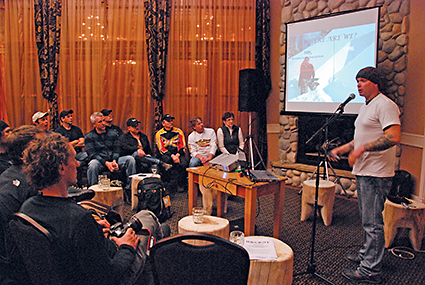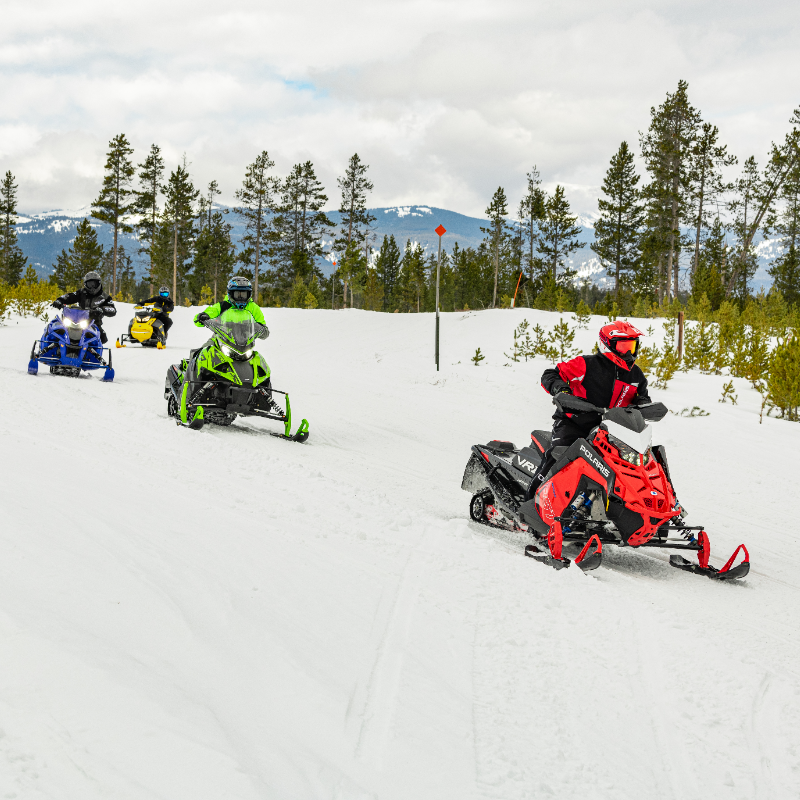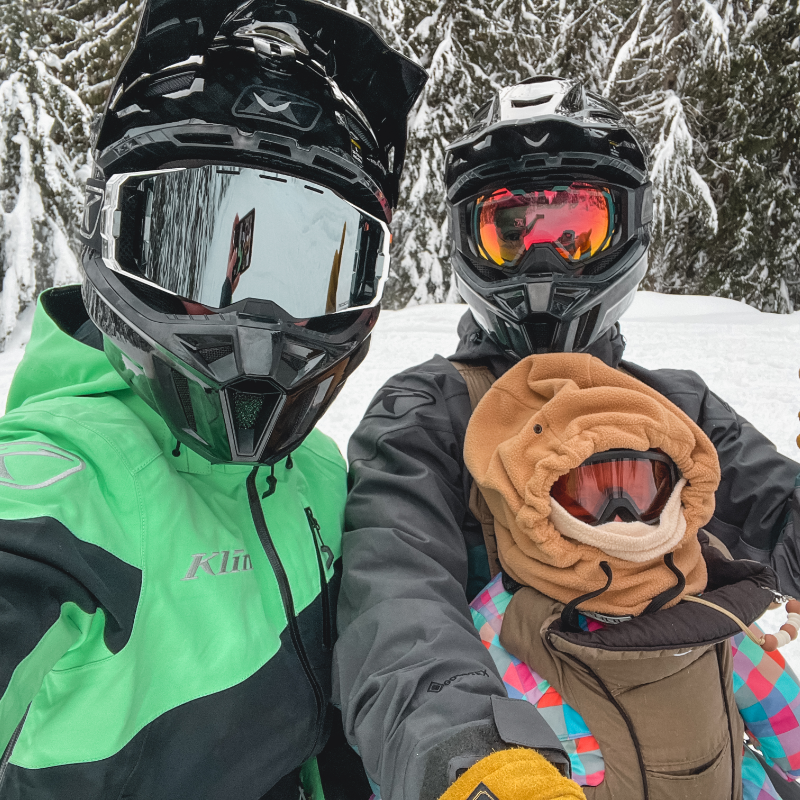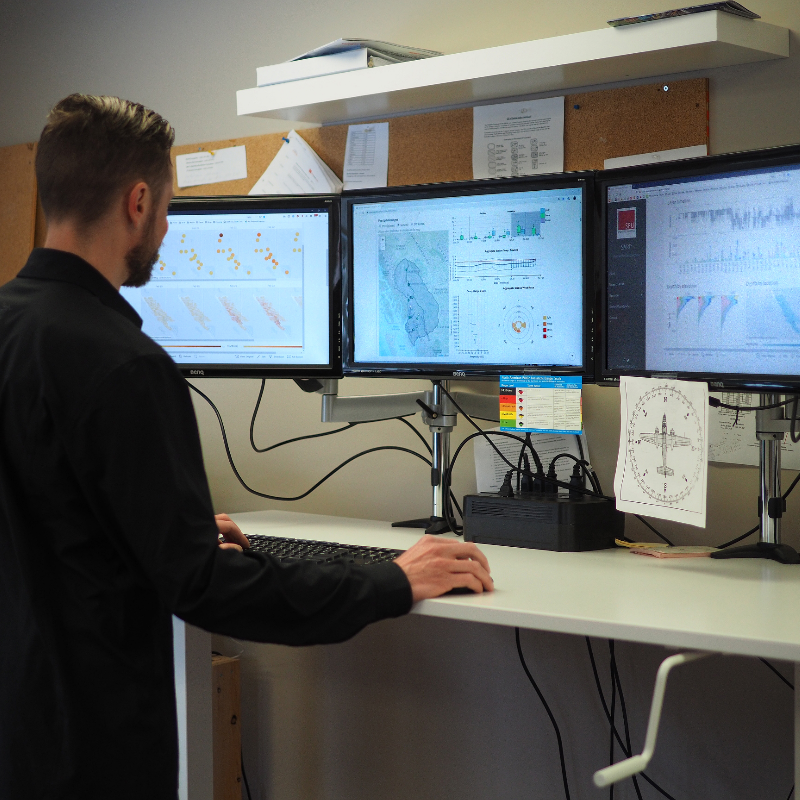Jeremy Hanke only had a few seconds to react before being hit with a wall of snow while sledding in the backcountry six years ago.
He was with friends parked with their snowmobiles at the bottom of a slide when snow on the mountainside above them let go.
It took 10 minutes for his group, some of whom were self-rescued, to pinpoint his location and dig six feet down to pull him out.
“Go stand out in the middle of the road and get hit by a truck,” Hanke said. “That’s what it felt like.”
One of his friends was filming everyone with a video camera when the avalanche struck; he captured panicked shouts before snow covered the lens.
Hanke shared his story at the Sledhead Think Tank safety forum, which included presentations from industry professionals and speakers from the Canadian Avalanche Association (CAA) and Teck Resources Limited. The presentations took place in a packed conference room at Park Place Lodge in Fernie, B.C.
The grassroots event was aimed at hammering home the need for safety awareness and risk management when heading out into the backcountry.
Hanke miraculously walked away from the Class 3 avalanche without any life-threatening injuries, and now he devotes his energy to sharing his experience and urging sledders to hone their safety skills through education.
But just because someone has the necessary skills and tools doesn’t mean they’ll never be in an avalanche. Hanke and his group of friends all had extensive training and experience. Choices made by a different group of people playing in the same area as them triggered the avalanche, which tragically took the life of one rider.
Choking back a few tears at times, Hanke said he doesn’t like to place blame for what happened, preferring to walk through the decisions made to illustrate how each choice led to the final outcome.
“The one thing that stands out (as) the biggest learning experience for me is the fact that (when you make choices on the trails), the risk is to your family and loved ones that you leave at home,” Hanke said. “They’re the ones that pay the consequence, not yourself.”
Awareness of consequences
Bad decisions have consequences that affect not just the snowmobiler but all the people in his or her life.
Clayton Podrasky, superintendent at Teck’s Line Creek Mine, drilled this point with an exercise usually reserved for mine operations by mapping out the network of people immediately impacted by the result of a bad decision, such as family and friends.
“When you’re out there, you have to realize that if you hurt yourself, you are affecting all the other people who are closest to you,” Podrasky added.
When snowmobiling in the mountains, decisions are made based on the ability to assess terrain—knowledge that can be gained from courses such as Avalanche Skills Training (AST), a 16-hour workshop on snowpack theory, risk management and rescue skills.
Correctly interpreting the terrain in recreation areas helps riders make the safest choices, said Ilya Storm, a public avalanche forecaster with the CAA. Temperature, wind erosion, snow conditions, cornices and loose rocks are just a few factors and signs backcountry enthusiasts must keep in mind when heading into mountainous terrain.
“Once you pick your trip, the way you move in the mountains really matters,” Storm said, “and it can make the difference between being able to successfully respond to an avalanche or having a really catastrophic, sad experience.”
Open communication
A moment of silence was marked at the Sledhead Think Tank to pay tribute to the men who lost their lives in a tragic avalanche near Sparwood, B.C., in December 2008.
Safety gear was featured by local businesses; Paul Kramer, owner of Ghostrider Motorsports, gave a brief rundown on the operation of SPOT, a satellite messenger device that tracks the movement of a user.
Marc LeDoux with Gearhub Sports showed off the Avi Vest—in the event of an avalanche, the wearer can pull a ripcord that inflates an airbag behind the head and neck.
Advice on helicopter evacuation, including safe entry, exit and proper techniques to hook up a snowmobile to a sling, was given by Greg Goodison of Ascent Helicopters.
The event ended with a discussion among the sold-out crowd of 80 people that emphasized the importance of knowledge, training and awareness to make safe decisions. Group dynamics and the need for riders to speak up if feeling uneasy about playing in unsafe areas was also acknowledged and encouraged.
The Sledhead Think Tank forum in Fernie was the first of four in the Elk Valley and Crowsnest Pass; it was organized by Teck, in partnership with Zac’s Tracs, College of the Rockies and SnoRiders magazine.







